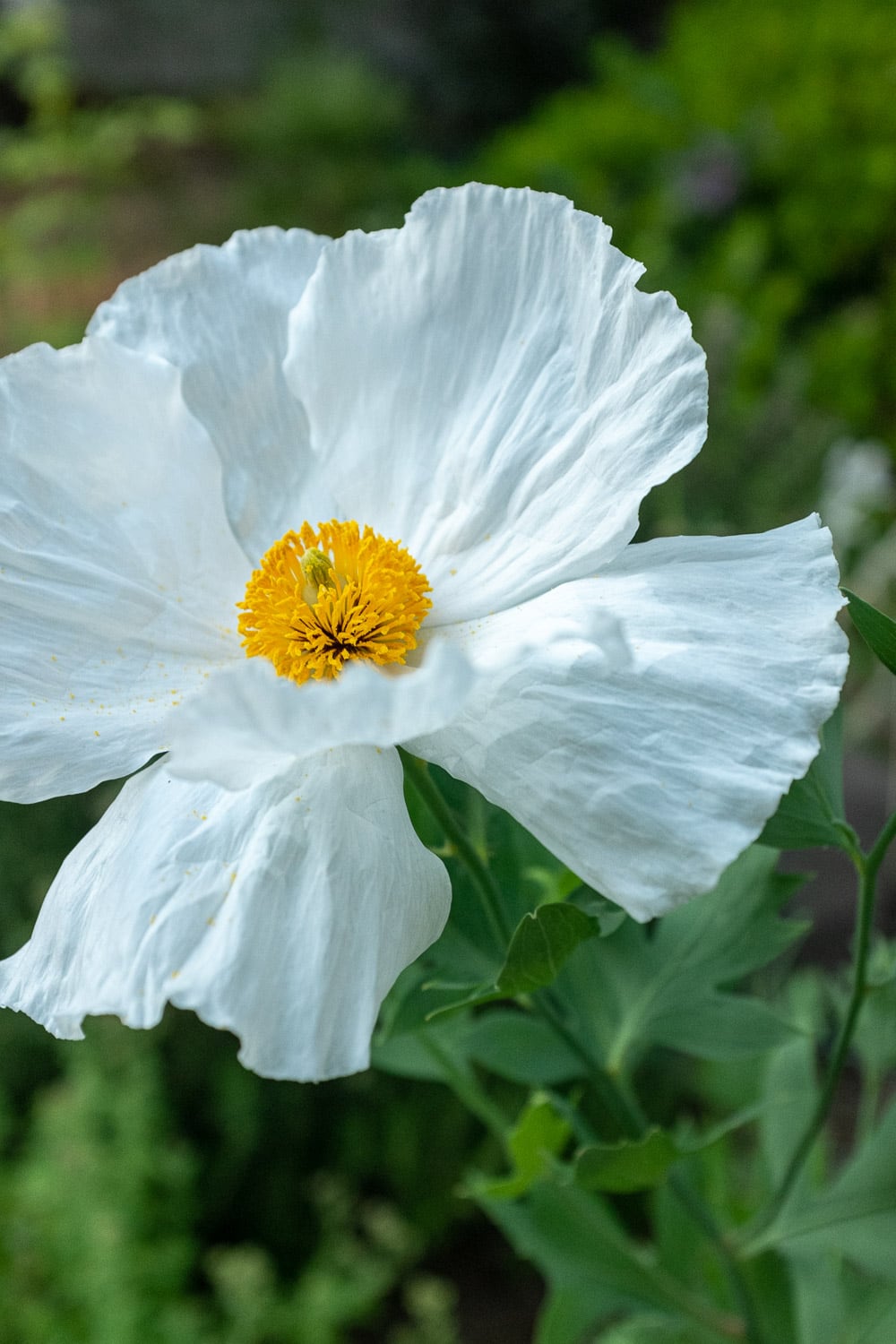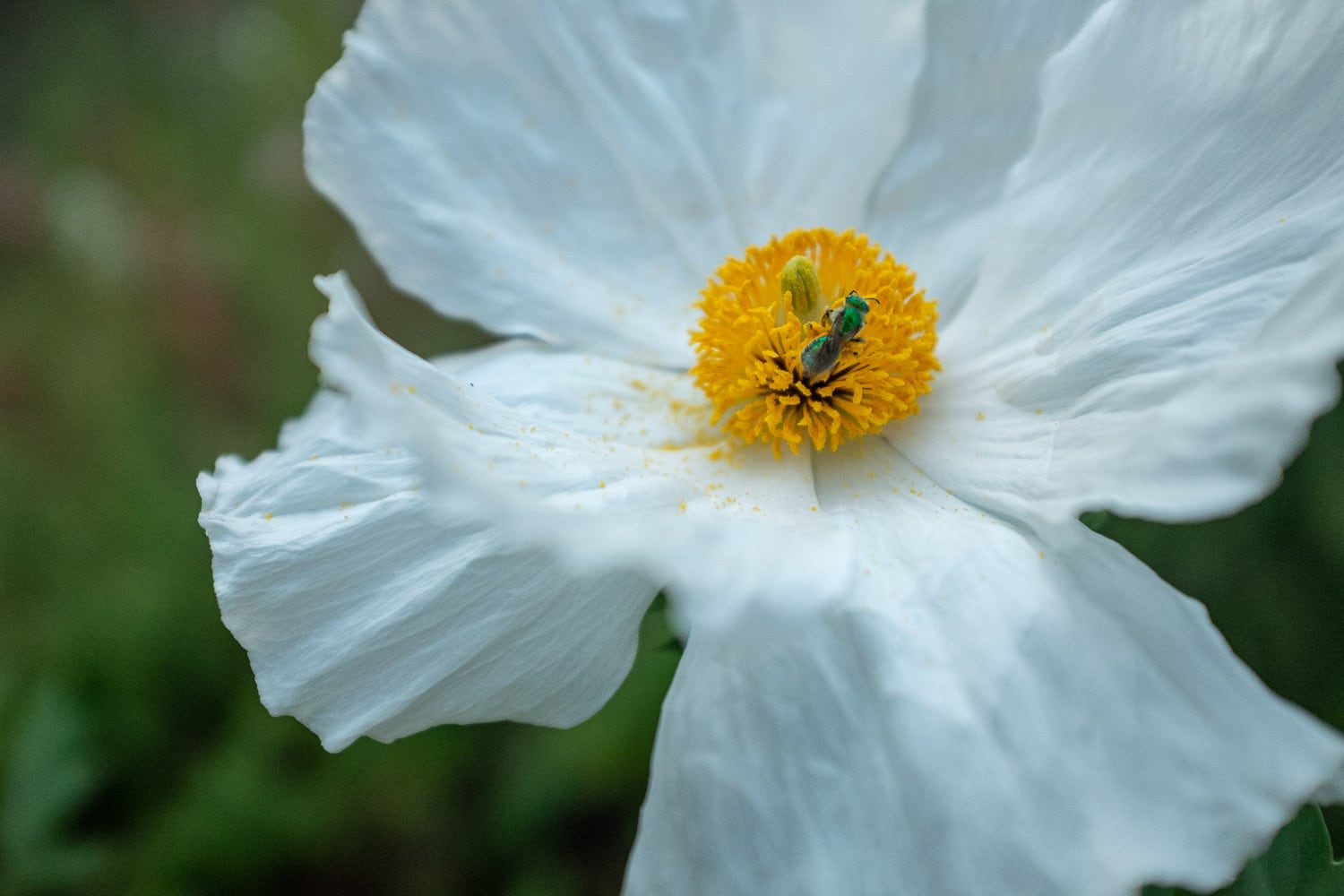
In the extremes, similarities: a muffled morning in heavy snow—a stifled afternoon in high heat; a winter branch splinters the air—a summer pinecone ricochets through limbs; snowflakes squash a plant (and how will it recover)—sun rays deflate a plant (and how will it recover).
It’s been hot. Record over record over record days. The air giving its all, its 110%, its 108 degrees.
Until now, there was one 100-degree day burned into memory. At age 7, I was in Indianapolis and the weather archives say it reached 102. We let the hoses run over our heads and drank, no gulped, from those toxic tubes, and asked mom if we could fry an egg on the steps. At the end of a concrete path too hot to touch barefoot, the egg maybe hardened around the edges. The excitement was short-lived. Nobody ate it.

On Sunday it was 104° and I arrived home with my family after an overnight trip. An hour-long car ride protected us from the soaring temperatures. Then, as we pulled into the driveway, a surprise. I’d been waiting for this moment and I sprang from the car into the yard: the eggs had fried.
Two years ago, I planted a Matilija poppy (Romneya coulteri). This California tree poppy is hard to start and, if happy, hard to stop. It took me two attempts. The first one I did everything right, carefully setting it in the ground, avoiding any interaction with its roots, but still it wilted and died. The nursery was kind enough to give me a second, which I saved until a perfect fall day and did everything right again.
It took hold last year growing a few feet and sending a few rhizomes out (this is the hard-to-stop part) but no flowers. Since cutting it down to three-inches last fall, the plant has grown several four-foot, gray-green stems—a new shoot has appeared two-feet away—and five full flowers. It likes its hot, sandy spot. And the heatwave isn’t slowing it down.

Requiring no additional water—maybe even detesting it—this poppy and it’s 4-inch bee-attracting flowers, is better than beautiful but damn is it beautiful. A fresh scent drifts several feet from the huge, papery flowers. A metallic green sweat bee crawls through the yellow puff of stamens. Tiny insects roam the white leaves like the surface of a moon that becomes speckled with pollen by day’s end.
Climate migration is a phrase I’ve heard. Migration implies action by the plants—their seeds moving north and finding ideal conditions in new places. We play a role too. I’ve allowed my focus on planting natives to extend to other parts of the country, but especially California. If it can grow down there, it’s becoming clear that it’s going to grow up here. As much as I celebrate this tree poppy and the years ahead, as it takes over the dry, sandy slope leading down to the street, it’s a mark of a new reality.
The winter snow melts, the juncos find their seeds; the summer flowers sizzle, the bees buried to their knees.
